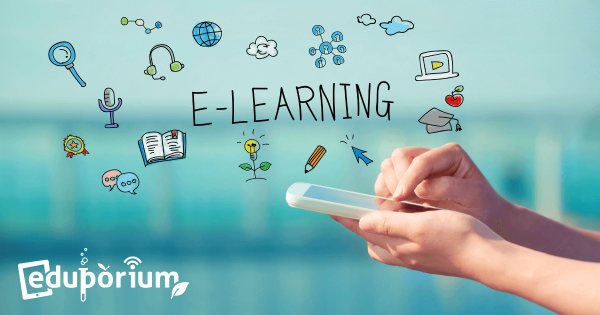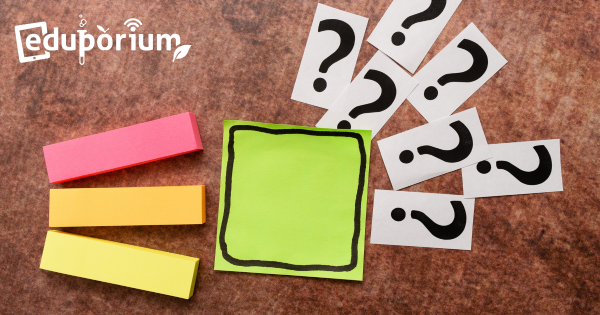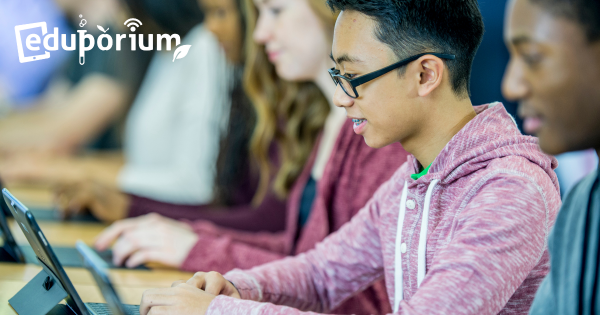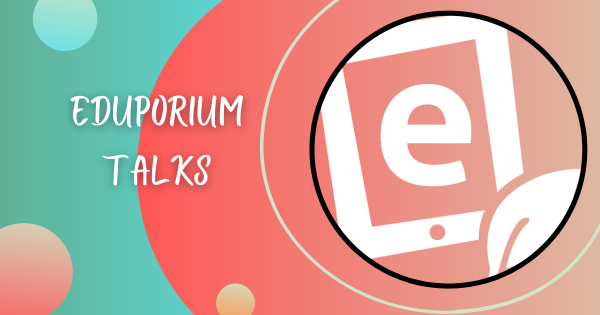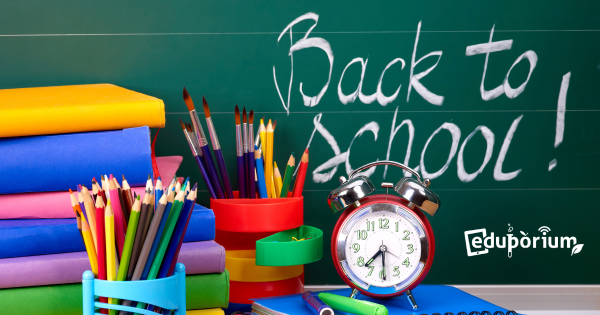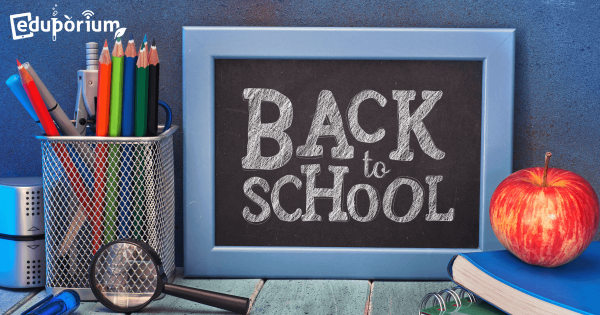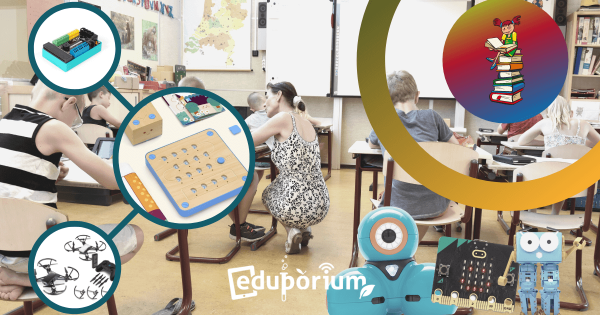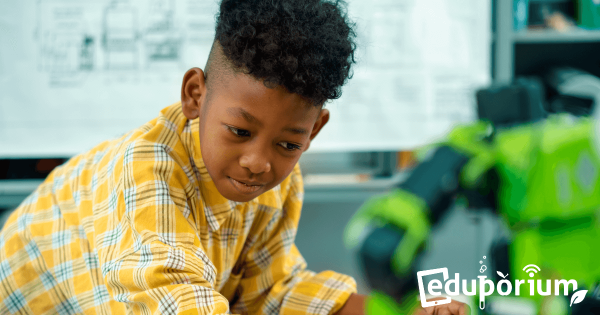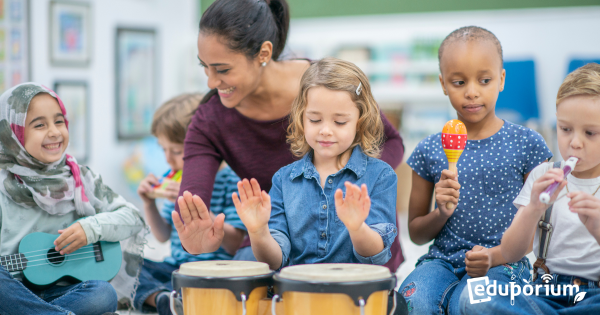Once you have students’ full attention, set clear objectives and frame them in a context that they can understand and, more importantly, identify with. Depending on your preference, this can be done by asking your students to reflect (a ‘why’ question) or challenges for them to chase (an ‘identify’ question). Head inside to learn more about this important area of
EdTech
Educational technology has, of course, completely transformed how today's K-12 students learn. From basic 3D printers and virtual reality systems to simple coding robots and screen-free building tools, countless numbers of educators have been able to affect education for the better and help children develop transferrable skills for the real world. Since EdTech now covers so many areas, however, there often remains a lot for teachers to learn about and explore. Not every technology tool will impact your students in the same ways, nor will they enhance every single lesson. It's more about finding the right solutions for the right situations and building high-quality instruction from there. In this section, we cover everything from specific classroom STEM kits to insights on integrating EdTech tools in teaching. And, we'll continue adding new resources with thoughts on the many branches of the EdTech tree.
EdTech resources are constantly impacting student development and redefining how educators can engage them. Besides those hands-on technologies, digital tools and platforms also play a huge role in learning. From coding or artificial intelligence to social-emotional learning, the instant availability of EdTech resources generates many revolutionary opportunities all throughout the world of K-12 and higher education. When it comes down to it, however, equitable access to technology can be a complete game changer. With these opportunities, students can build the hard and soft skills to navigate our increasingly complex world. And, no matter how complex or simplistic EdTech activities are, they can help catalyze that development. We encourage you to browse the content below and reach out to our team with any questions.
-
Eduporium Weekly | Fostering Inquiry To Advance Learning
Do you ever sit around and dream up ways for how classrooms can be made more exciting, innovative and useful? Just start a little inquiry, mix in a bit of cool technology and you’ll be on your way to interacting with a room of engaged students! That is the focus of this week’s Eduporium Weekly along with how you can -
Confirming The Importance Of Technology In The Classroom
All too often, we place too much emphasis on driving home concepts and confirming student knowledge by administering tests on a regular basis. Is this the best way for kids to learn, though? Traditionally, most education models have revolved around this approach, but in recent years, more and more teachers have been embracing STEM methods. -
Edporium Talks: Andre Canty (MTSU)
André Canty is a native of Knoxville, TN and a graduate of South Doyle High School. He began his undergraduate work at Middle Tennessee State University and later transferred to the University of Tennessee. His degree is in English Literature. He also teaches students in grades 7-12 to illustrate Black history. -
Eduporium Weekly | 2015 Back-To-School Edition
Blended learning initiatives are currently carving their path into mainstream education with as much force as Hurricane Fred. Okay, maybe not quite as much, but it’s still equally powerful. That’s because when it comes down to modern learning in 21st century schools, two minds are often much better than one. Head inside to learn more about the latest trends we’re -
Eduporium Weekly | Just When IS Back To School Time?
It’s just about that time again—the exhilaration (for teachers) and the dreading (for students) of going back to school. Or is it time yet? Have you ever wondered if every child in the world starts school on the same day or, if they don’t, how long have they already been in class? Well, the answer is that not everyone starts -
Our Day At MassCUE’s Better Together 2015
The theme for MassCUE’s recently held 2015 summer workshop for STEM and tech educators was ‘Better Together—Working with Your Librarian and ITS to Design Great Projects.’ After all, education isn’t any different; plenty of truly innovative and revolutionary results often stem from collaboration among groups of students using technology in the classroom. -
Eduporium Weekly | Discussing The Importance Of Creativity
Fortunately, there are plenty of ways to overcome lack of creativity in education and if you’d care to learn how, keep reading! Some of the factors that scientifically compose creativity include originality, self-expression, risk taking and collaboration—none of which I see in traditional lecture-giving and note-taking classrooms. -
Eduporium Weekly | The Most Realistic Robot Yet
Researchers from MIT reportedly have created a new robot in their lab and apparently, it does resemble an actual person. Engineers at the prestigious university recently revealed the interface they have constructed, which can allow human programmers to interact with a humanoid robot, allowing that robot to learn and eventually mimic human-like reflexes. -
Eduporium Weekly | The Real World In The Classroom
With all the buzz surrounding STEM education, teaching students skills that will be vital to succeeding post-education is something that the best modern instructors seek to accomplish. What they could be doing, however, is not only teaching students the skills they will need, but also putting them to the test now right in the classroom.




